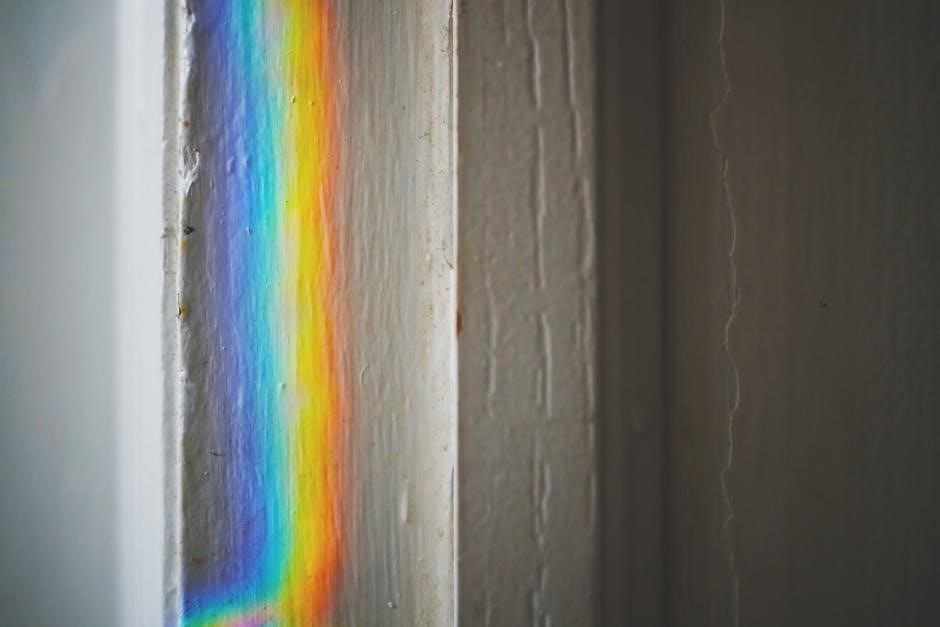Prism Grout Instructions: A Comprehensive Guide
Embark on your tiling project armed with this guide, detailing the proper steps for using Prism Ultimate Performance Cement Grout. Achieve professional results by following these instructions meticulously for any tile installation.
Prism Ultimate Performance Cement Grout stands out as a go-to choice for various tile installations. Its reputation for high quality and ease of use makes it a favorite among professionals and DIY enthusiasts alike. This comprehensive guide dives into the specifics of using Prism grout, ensuring a successful and visually appealing outcome for your tiling project. From proper mixing techniques to achieving a clean and finished look, each step is meticulously outlined.
Whether you’re working with tile or stone, understanding the nuances of Prism grout application is crucial. We’ll cover essential aspects such as substrate preparation, grout mixing ratios, application methods, and cleaning procedures. Following these instructions carefully allows you to harness the full potential of Prism grout, resulting in a durable and aesthetically pleasing surface that enhances your space. Get ready to elevate your tiling skills and create a lasting impression.

Preparation Before Grouting
Before applying Prism grout, ensure the tile or stone is firmly bonded to a sound substrate. Proper preparation is key for a long-lasting and visually appealing finish.
Ensuring Proper Substrate and Tile Bonding
Before commencing the grouting process with Prism grout, verifying proper substrate preparation and secure tile bonding is paramount for a successful and durable installation. The substrate must be structurally sound, clean, and free from any debris, dust, or contaminants that could compromise adhesion. Ensure the substrate is level and properly prepared according to industry standards and the manufacturer’s recommendations for the setting material used.
Allow the setting material to cure for a minimum of 24 to 48 hours before applying Prism grout, unless a rapid-setting mortar is utilized. Check that each tile or stone is firmly bonded to the substrate, exhibiting no movement or instability. Any loose or improperly bonded tiles must be re-secured before proceeding. Consistent and proper bonding ensures that the grout will perform optimally, preventing cracks and failures in the future.
Cleaning and Dampening Tile Surface
Prior to applying Prism grout, thorough cleaning and proper dampening of the tile surface are crucial steps for achieving optimal results. Begin by removing any spacers used during tile installation. Ensure that all tile surfaces are free from dust, dirt, adhesive residue, or any other contaminants that could hinder grout adhesion or affect its color.
Use a clean, damp sponge to wipe down the tile surfaces, taking care not to leave excessive water puddles in the joints. Lightly dampen the surface to aid in grout adhesion and prevent the tile from absorbing moisture too quickly from the grout. Avoid over-wetting the tiles, as this can dilute the grout and weaken its bond. The goal is to create a slightly moist surface that promotes a strong and uniform grout application.
Applying Grout Release (If Necessary)
Before grouting, consider whether your tile type requires a grout release agent. Certain tiles, particularly porous or textured ones, are prone to staining from grout pigments. Applying a grout release helps prevent this issue by creating a temporary barrier.
Carefully apply the grout release product according to the manufacturer’s instructions. Typically, this involves applying a thin, even coat to the tile surface using a sponge or applicator pad. Ensure that you cover the entire tile surface, paying special attention to textured areas or edges. Allow the grout release to dry completely before proceeding with the grouting process. This protective layer will make grout cleanup easier and prevent unwanted staining, preserving the tile’s original appearance. Remember to always test the grout release in an inconspicuous area first to ensure compatibility.

Mixing and Slaking Prism Grout
Achieving the perfect grout consistency is crucial. Proper mixing and slaking are key to unlocking Prism grout’s ultimate performance, ensuring workability and optimal strength for a lasting, beautiful tile installation.
Proper Mixing Ratio and Techniques
To achieve the best results with Prism Grout, adhering to the correct mixing ratio is paramount. Use a clean mixing container and potable water. Gradually add the dry Prism Grout to the water, constantly mixing with a low-speed mixer, until a smooth, lump-free consistency is achieved. Avoid adding too much water, as this can weaken the grout and affect its color.
The ideal consistency should be similar to that of peanut butter. Scrape the sides and bottom of the container to ensure all dry grout is incorporated. For larger projects, consider using a mechanical mixer to ensure thorough blending. Remember, consistent mixing is key to achieving a uniform color and performance. Always refer to the manufacturer’s instructions on the grout bag for specific water-to-grout ratios, as these can vary depending on the Prism Grout product.
Importance of the 10-Minute Slaking Period
The 10-minute slaking period is a crucial step in preparing Prism Grout for application. After the initial mixing, allow the grout to stand, undisturbed, for 10 minutes. This slaking period allows the polymers and additives within the Prism Grout to fully activate and hydrate. This hydration process enhances the grout’s workability, adhesion, and overall performance.
Skipping the slaking period can result in a grout that is difficult to apply, prone to cracking, and may exhibit inconsistent color. During slaking, the grout’s chemical components interact, leading to improved strength and flexibility. This step ensures that the grout reaches its optimal state before application, contributing to a long-lasting and aesthetically pleasing finish. Always adhere to the recommended 10-minute slaking time for best results.
Re-mixing Before Application
After the crucial 10-minute slaking period, re-mixing the Prism Grout is an essential step before you begin the application process. This re-mixing ensures that the grout achieves a uniform consistency throughout the mixture. The slaking period allows the grout to hydrate, but re-mixing redistributes the moisture and ensures even activation of all components.
Use your mixing tool to thoroughly blend the grout again, paying attention to the bottom and sides of the mixing container. The goal is to eliminate any potential settling or separation that may have occurred during slaking. This re-mixing process guarantees that you’re applying a consistent and workable grout, leading to a smoother application, better bonding, and ultimately, a more durable and visually appealing finished project.

Applying Prism Grout
Once mixed, Prism grout is ready. Use a grout float at an angle to force grout into joints. Ensure consistent depth for a professional finish on your tile.
Using a Grout Float for Application
Applying Prism grout effectively hinges on the correct use of a grout float. Begin by holding the float at a 45-degree angle to the tiled surface. This angle allows you to efficiently push the grout into the joints, ensuring they are completely filled. Apply firm, consistent pressure as you move the float across the tiles, working diagonally to the grout lines. This diagonal motion helps to pack the grout tightly into the spaces between the tiles, minimizing air pockets and ensuring a strong, durable bond.
Overlap each pass with the grout float to avoid leaving any gaps or voids in the grout. As you work, frequently scrape excess grout from the float onto a clean portion of the tiled surface. This helps to maintain a clean working area and reduces the amount of excess grout that needs to be removed later. Remember to work in manageable sections, typically no more than a few square feet at a time, to prevent the grout from drying out before you have a chance to tool and clean it.
Ensuring Uniform Joint Depth
Achieving a professional and aesthetically pleasing grout job relies heavily on maintaining a uniform joint depth. Before applying Prism grout, meticulously inspect all tile joints, removing any debris, spacers, or excess thin-set mortar that may be present. These obstructions can prevent the grout from filling the joints completely, leading to inconsistencies in depth and potential weaknesses in the grout structure.
Use a utility knife or a grout saw to carefully clear out any obstructions, ensuring that the joints are clean and open to the desired depth. Consistency is key; aim for a uniform depth throughout the entire installation. This not only enhances the visual appeal but also ensures that the grout cures evenly, providing a stronger and more durable surface. Uneven joint depths can result in variations in color and texture, detracting from the overall finish. Take the time to prepare the joints properly, as this step is crucial for achieving a professional and long-lasting result with Prism grout.

Cleaning and Finishing
Proper cleaning and finishing are crucial for achieving a professional Prism grout installation. Use a damp sponge and microfiber towel to carefully remove excess grout, revealing the beauty of your tile.
Using a Damp Sponge and Microfiber Towel
After the Prism grout has set for the recommended time, typically 15-30 minutes, begin the initial cleaning phase. Use a clean sponge dampened with water – ensuring it’s not overly saturated, preventing water from pooling on the tile surface or within the grout joints. Gently wipe the tile diagonally across the grout lines to remove excess grout. Rinse the sponge frequently in clean water to avoid reapplying grout residue.
Follow the sponge cleaning with a microfiber towel or sponge. These materials are effective at removing the fine grout haze that remains after the initial sponging. Use light pressure and circular motions to buff the tile surface, further cleaning and polishing the grout. Regularly clean or replace the microfiber towel to maintain its effectiveness. This two-step process ensures a clean, professional finish, enhancing the appearance of your tiled surface.
Addressing Grout That’s Difficult to Remove
Sometimes, Prism grout can become challenging to remove from the tile surface during installation. If you encounter this issue, don’t panic. Lightly moisten the affected tile surface with a clean, damp sponge. Avoid oversaturation, as excess water can weaken the grout. Allow the water to dwell on the surface for approximately 1-2 minutes. This brief soaking helps to soften the hardened grout, making it easier to remove.
After the waiting period, gently clean the softened grout using a damp sponge and a microfiber towel. Apply light pressure and circular motions to lift the grout haze. If the grout remains stubborn, repeat the moistening process. For persistent areas, consider using a specialized grout haze remover, ensuring it’s compatible with your tile type. Always test the remover in an inconspicuous area first. Remember, patience and gentle techniques are key to avoiding damage to your tiles.
